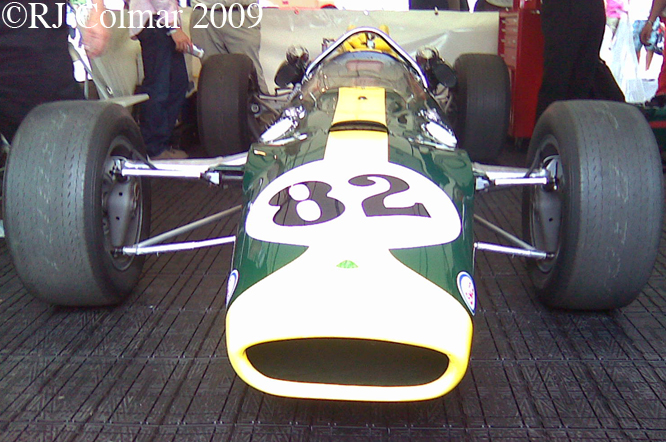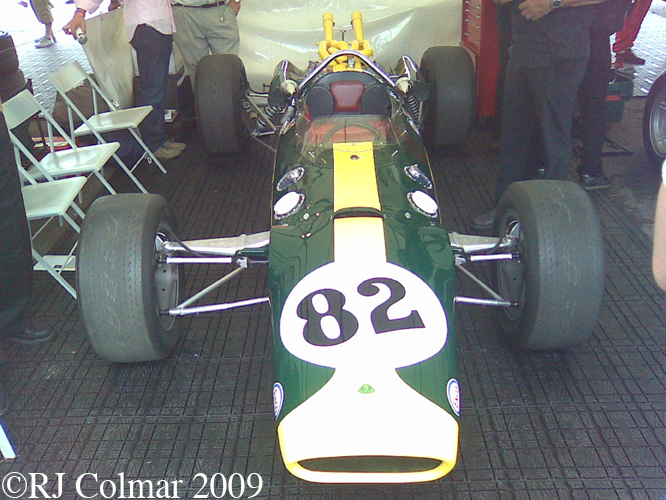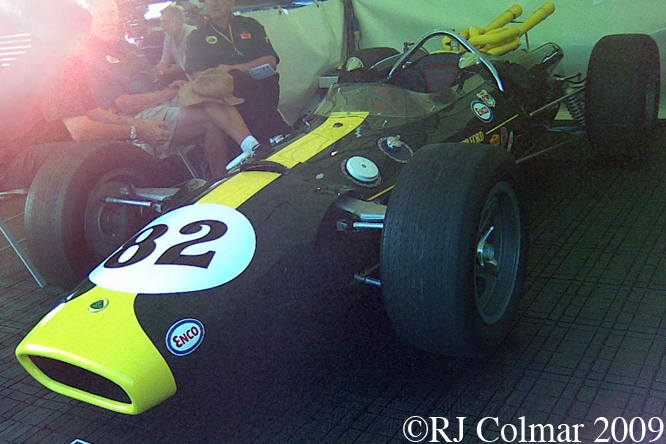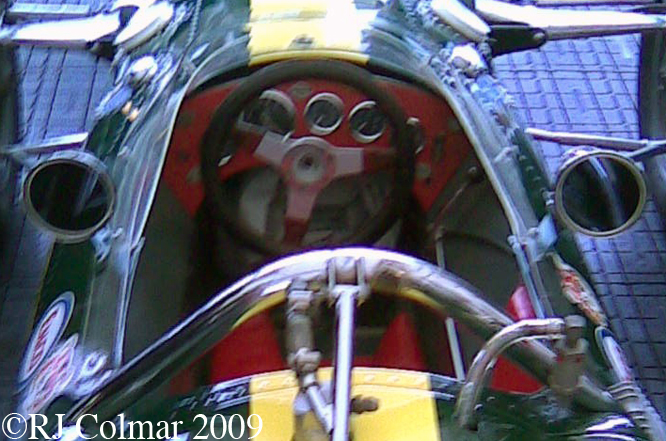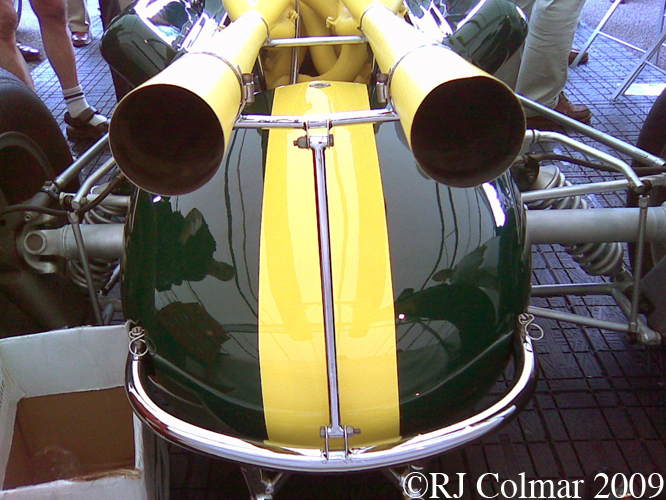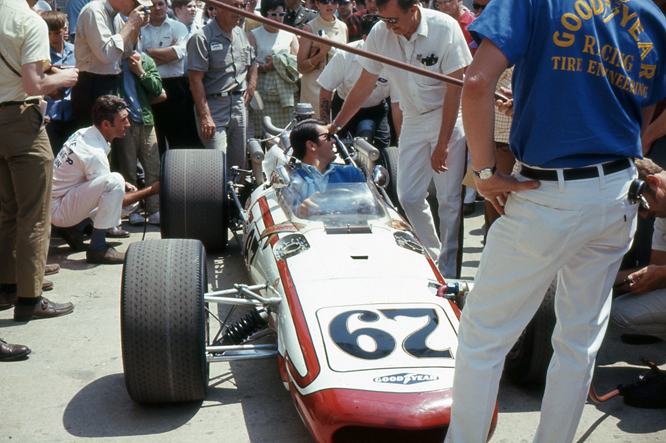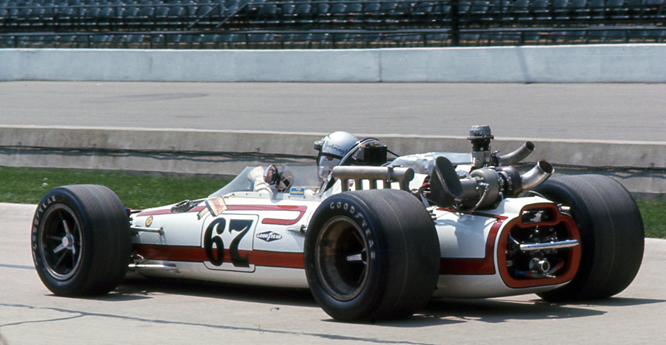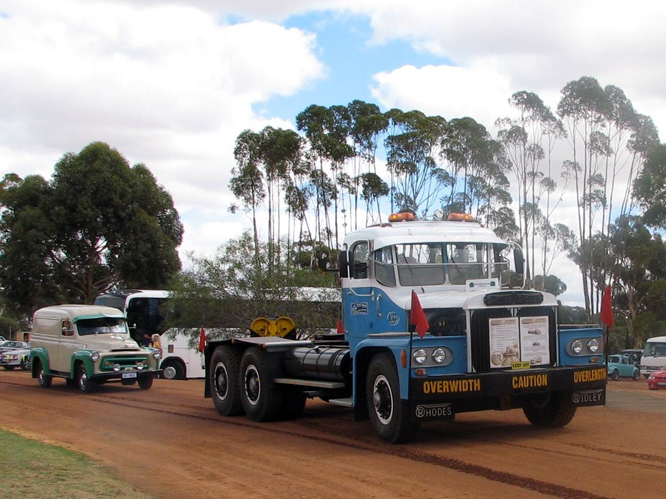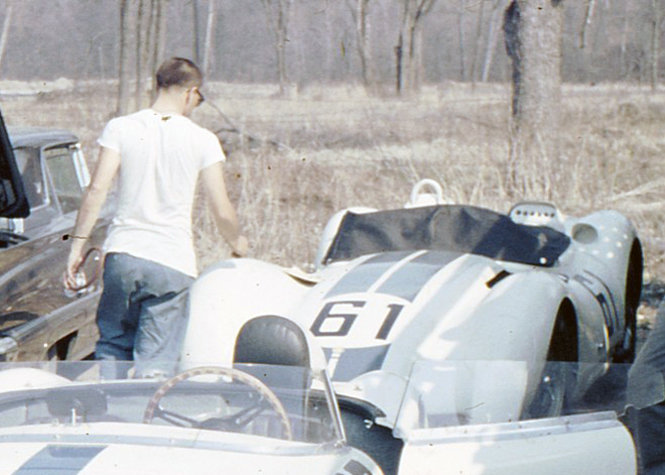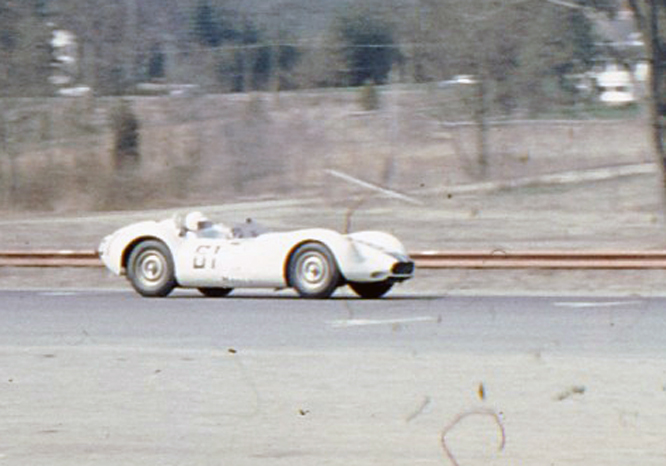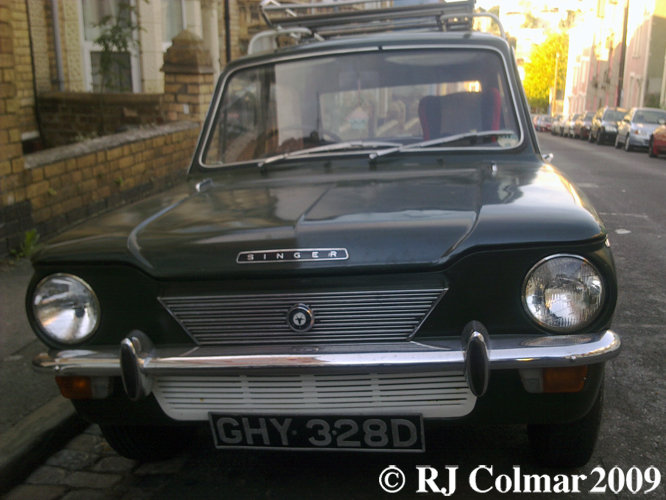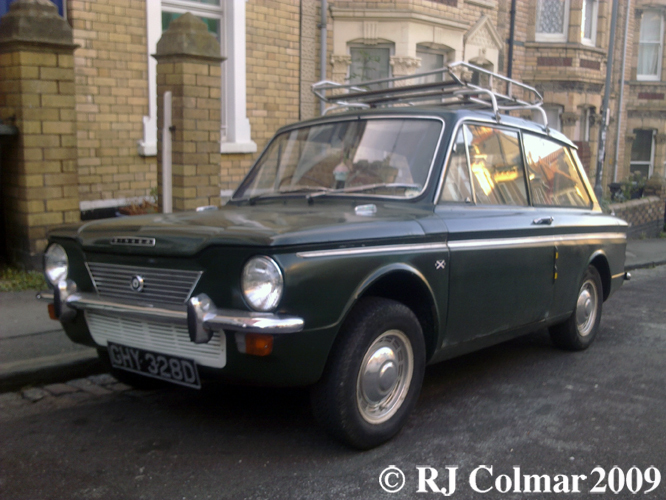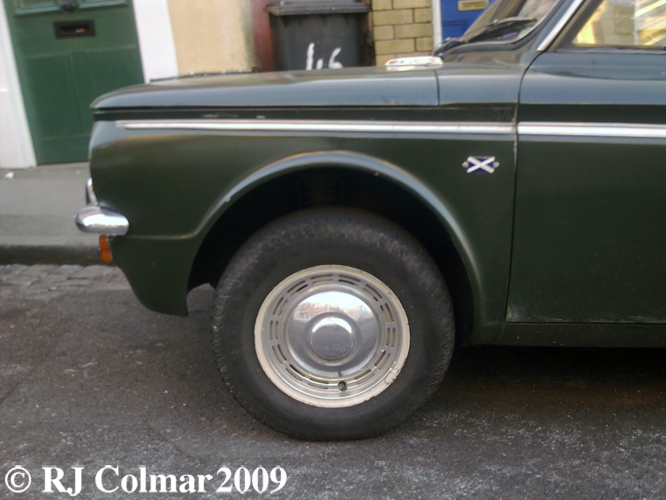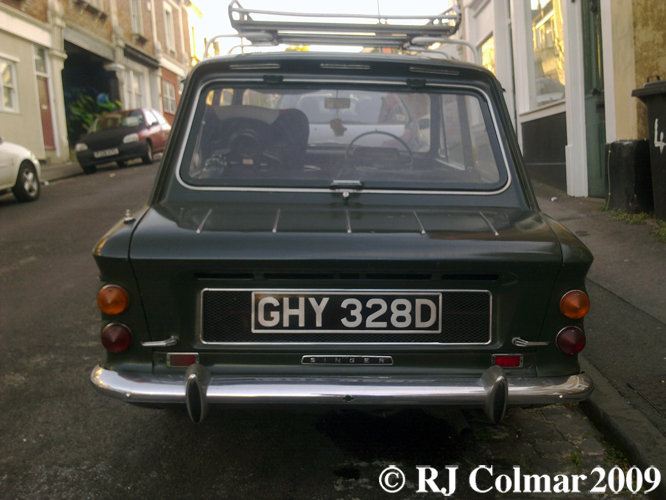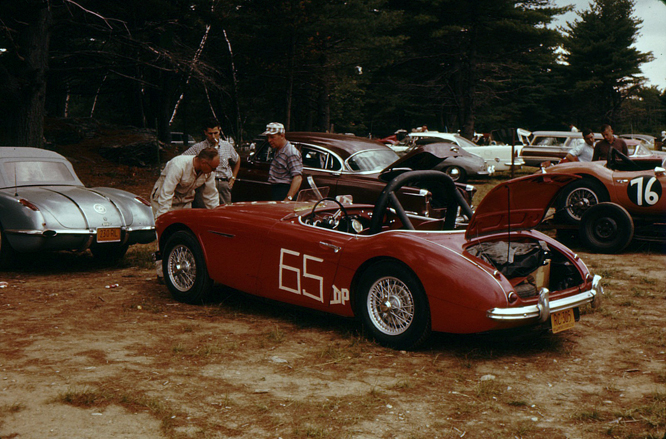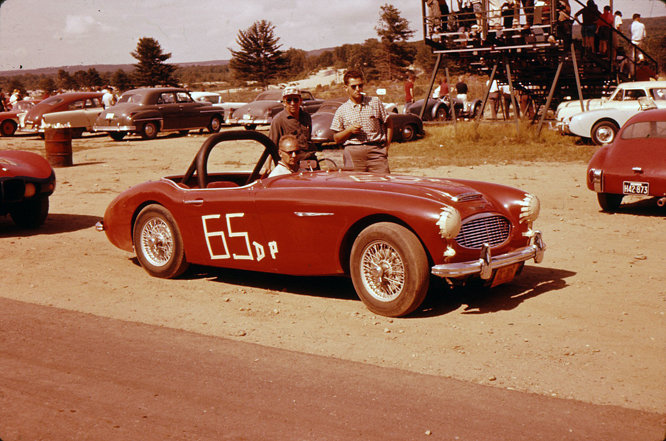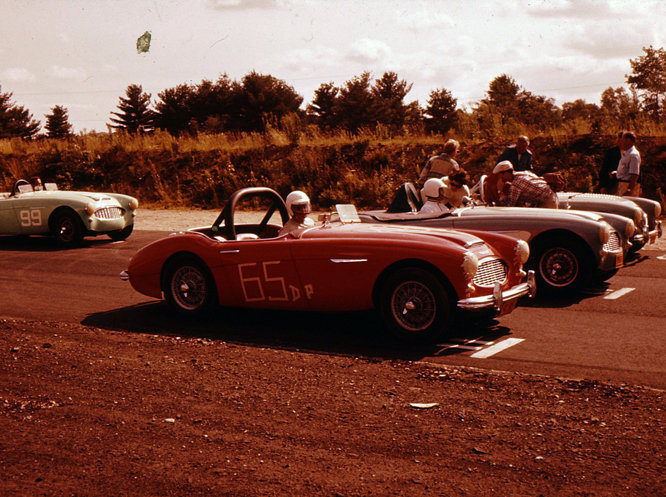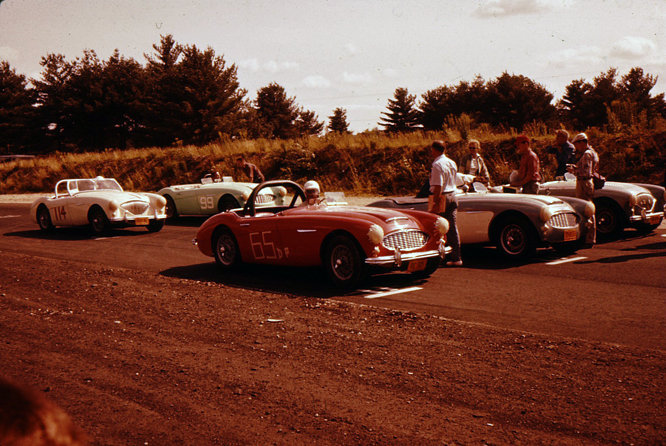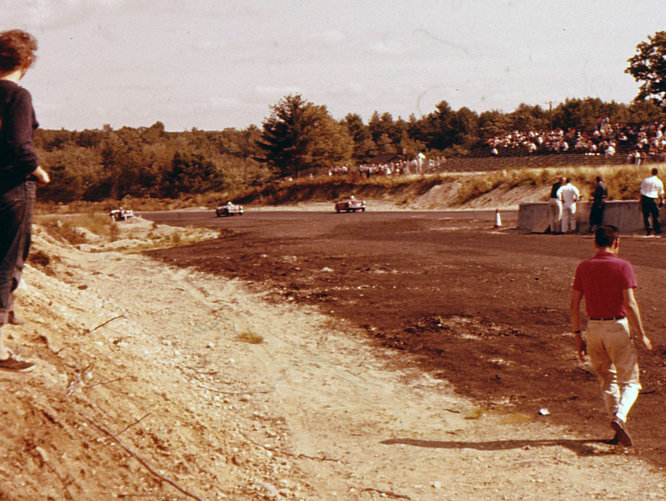The story of the Eagle Formula One car began when the Goodyear Tyre and Rubber Company asked Carol Shelby and Dan Gurney founders of All American Racers Inc to build an Indy 500 challenger with which to compete against Firestone shod Indy cars. Part of the deal included the go ahead to build a Formula One car “to represent the U.S.A.”
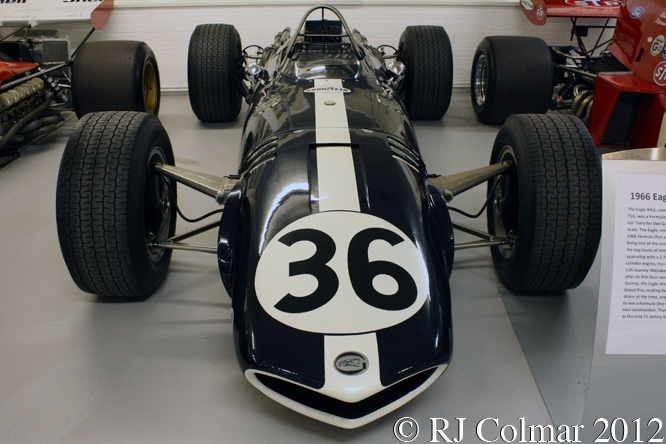
Shelby and Gurney turned to Len Terry to produce a design for a chassis that met both tasks. Terry had been responsible for the design of the Lotus 38 which Clark and Gurney drove in the 1965 Indy 500 which had been convincingly won by Clark who led 190 laps from pole. The Mk 2 was a Ford V8 powered Indy car, while Mk 1 was the Formula One variation featured today which was to be powered by an Aubery Woods designed V12 that was to be built at Harry Westlake’s premisses in Rye, Kent, England.
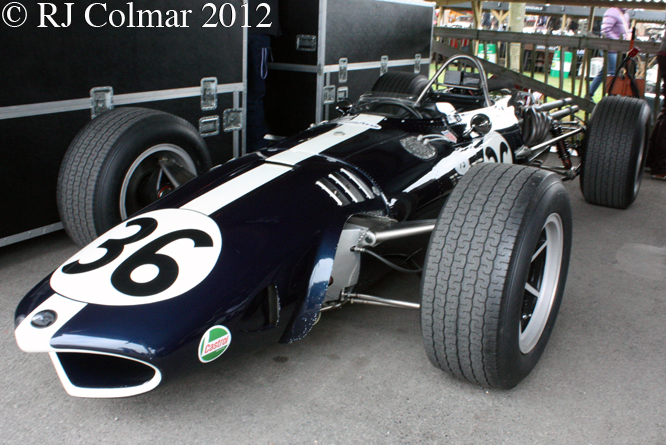
The chassis for both program’s were manufactured at All American Racers premises in Santa Ana, California with the complete Formula One chassis being sent on to a new shop Gurney had set up close to Harry Westlake’s premisses in ‘the ancient pirate town’ of Rye and operated by Anglo American Racers. The Westlake V12’s were only ready midway through the season and to get there project underway Gurney drove his Eagle with a slightly undersized Coventry Climax four cylinder motor.
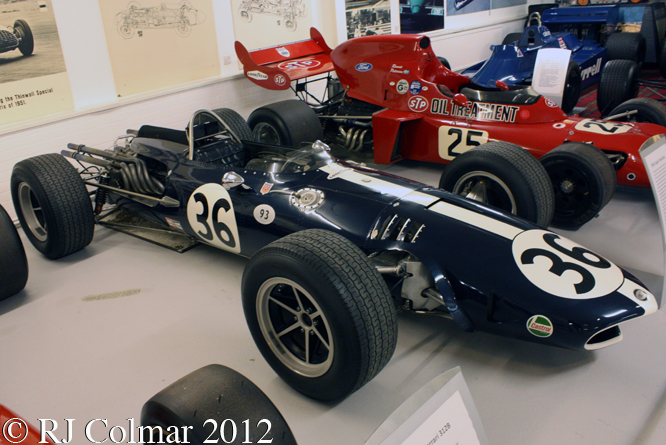
The origins of the 3 litres / 183 cui Westlake V12 lay in a 500cc /46.25 cui 2 cylinder motor that Aubery Woods had built for Shell Oils funded research project. Gurney heard about the motor from his former BRM colleague Woods and had the motor built with a budget of US$600,000 by Westlake. Westlake’s facilities were a little on the primitive side using military surplus tooling that dated back to the 1914/18 Great War. However despite poor interchangeability of parts from one motor to the other they were more reliable than some of the ancillaries including the electrics and fuel pumps. There was a design flaw in the oil scavenging system which was discovered too late in the development of process that sees the sump fill up with oil during the course of a race which causes a steady loss of horsepower.
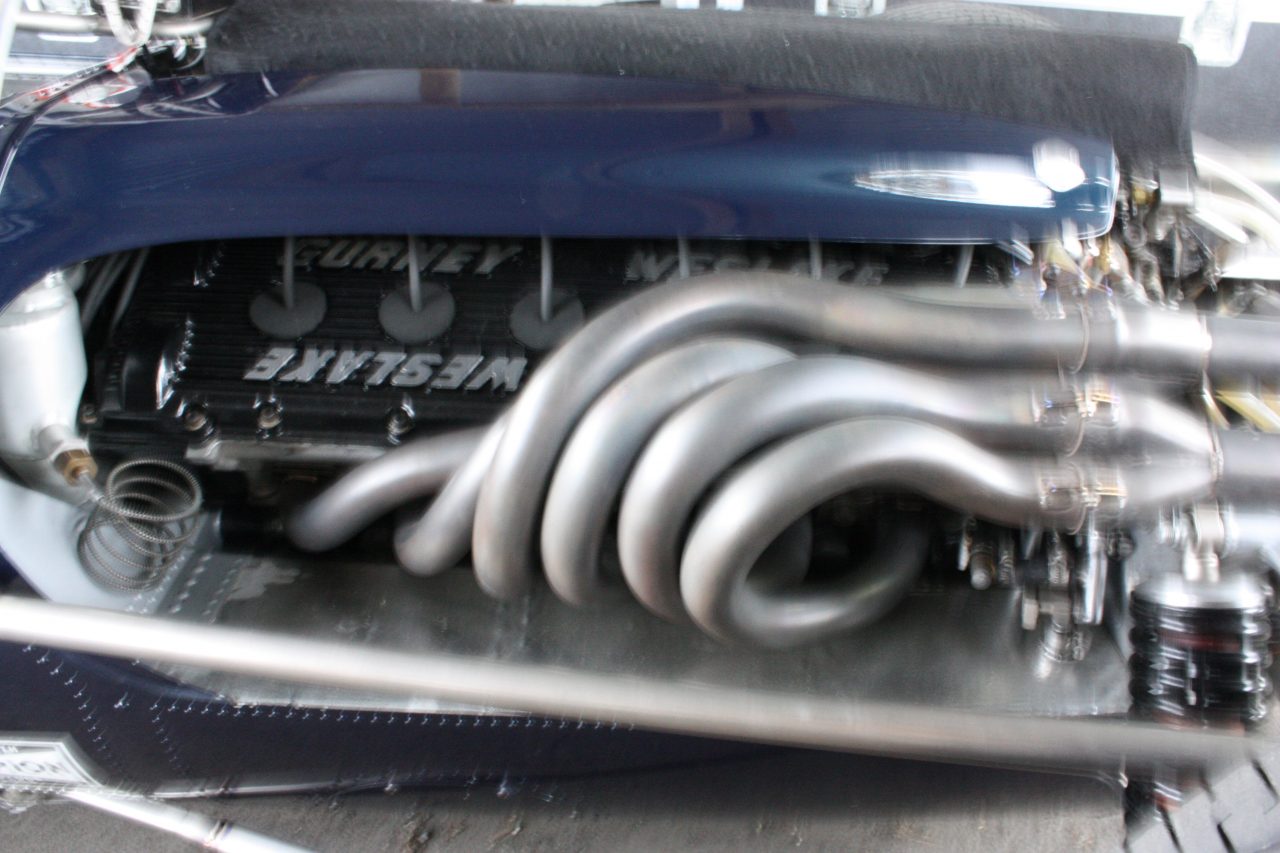
The first three Mk 1 chassis built from aluminium, but the forth car seen here was built with the extensive use of titanium and magnesium alloy in an effort to reduce weight. Gurney commented that driving the 104 was like “driving a Ronson cigarette lighter” as magnesium alloy is exceptionally flamable.
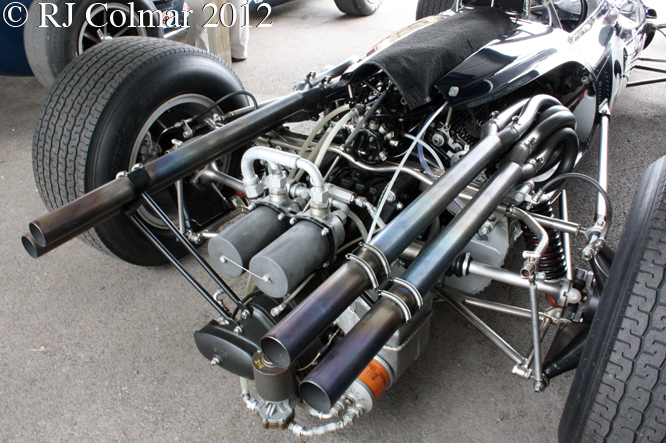
Just one week after his victory in the Le Mans 24 hours with AJ Foyt with whom he shared a Ford Mk IV, at the 1967 Belgian Grand Prix Gurney qualified AAR104 on the front row next to Jim Clark in his Lotus 49. Clark led the race until he needed an unscheduled stop to change his spark plugs. Jackie Stewart starting from sixth took over the lead while Gurney also had an unscheduled stop to cure a fuel pressure problem. Gurney resumed in second place when Stewart’s car developed a gear box problem. With 8 laps to go and breaking the 8 year old Spa Francochamps lap record Gurney swept into the lead and the first Grand Prix victory by an American driving and American car since Jimmy Murphy won the French Grand Prix driving a Dusenberg in 1921. He also started the habit of spraying champagne during Grand Prix victory race celebrations, having done so for the first time at Le Mans a week earlier.
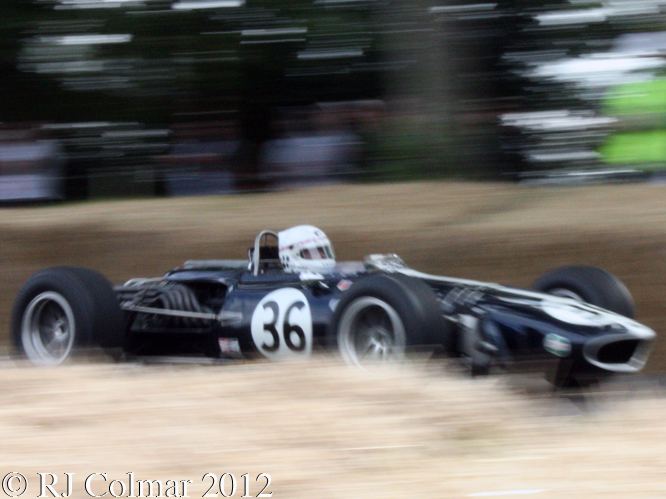
At the German Grand Prix Gurney led and set the fastest lap again when his car retired with half shaft failure with 3 laps to go. That fastest lap on Europe’s most challenging circuit was particularly satisfying. Dan’s only other finish in ’67 was 3rd in the Canadian Grand Prix.
Running out of money the AAR team continued into 1968 at the Nurburgring again, but this time in the fog and rain Gurney had another satisfying if unrewarding drive having recovered from last place after a puncture to a season best, indded only, ninth finish for the Eagle. During that race Gurney became the first man to wear a, Bell, full face helmet in a championship Formula One race.
The Eagle Mk 1 appeared for the last time at the Italian Grand Prix where Dan qualified 12th, but retired with an overheating motor. AAR acquired a Ford Cosworth powered McLaren M7A with which to compete in the last three races of the 1968 season, scoring a best 4th place finish in the US Grand Prix.
Note: The Eagle Mk 1 is often referred to as the Eagle T 1 G which was Len Terry’s designation for the design.
Thanks for joining me on this “Like No Lighter You’ve Known Before” edition of “Gettin’ a li’l psycho on tyres” I hope you will join me again tomorrow for Ferrari Friday. Don’t for get to come back now !


